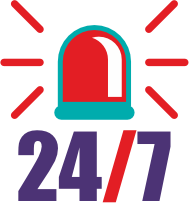Seamless support from diagnosis to post treatment care
Cerebral Palsy Care
At Rainbow Children’s Hospital, we provide comprehensive medical care for pediatric patients diagnosed with cerebral palsy, recognizing that each child's unique needs demand a multidisciplinary approach. Our team of pediatric specialists, including pediatric neurologists, orthopedists, physiotherapists, speech therapists, occupational therapists, and developmental sciences experts, collaboratively oversee your child's specialized care.
Our services at Rainbow Children’s Hospital encompass the diagnosis and treatment of cerebral palsy, including:
Computerized Tomography (CT) scans for the identification of abnormalities.
Cranial Ultrasound for initial brain examination.
Magnetic Resonance Imaging (MRI) for the detection of lesions and abnormalities.
Electroencephalogram (EEG) to assess cerebral palsy in children experiencing seizures or epilepsy.
Following a conclusive diagnosis by our medical professionals, Rainbow Children’s Hospital offers a range of treatment modalities, including:
Nerve or muscle injections.
Oral muscle relaxants.
Physical therapy.
Speech and language therapy.
Occupational therapy.
Recreational therapy.
Orthopedic surgery.
Selective dorsal rhizotomy.
This advanced rephrasing maintains clarity while presenting the information in a more sophisticated manner.
Key Highlights:
Expertise in guiding and supporting families
Expert Counselling and Treatments

Find a Doctor
Expertise you can trust, Meet our esteemed doctors who bring exceptional knowledge, compassion, and innovation to provide top-notch care for your health and well-being.
Our Hospitals and ClinicsOur Hospitals and Clinics
Rainbow Children's Hospital stands as a testament to the hospital's continual pursuit of excellence and innovation, providing specialized care for women and children.
Request a Call back
Tap to Fill FormRequest a Call back
Blogs
Discover our most recent health articles provided by our reliable experts.
What Are People Saying About Us
Embark on a journey of inspiration and hope with our patient success stories, complemented by informative videos from our dedicated doctors.
There are different factors that come into play at different stages:
During Pregnancy
Biochemical genetic disorders
Damaged Placenta interfering with the growth of the fetus
Exposure to toxic substances like alcohol and nicotine
Infections
Malformations of the developing brain
Maternal diabetes, high blood pressure, or hyperthyroidism
Multiple births
Poor nutrition
Premature dilation resulting in premature delivery
During Labor
Abnormal positionings of the baby like a transverse lie or breech
Amniotic membrane rupture causing fetal infection
Premature delivery
During early childhood
Asphyxia due to accidents like drowning
Brain hemorrhages
Infections like meningitis
Head injury
seizures
Day-to-day challenges in school and workplace
Prone to degenerative arthritis and osteoarthritis
Pain in the ankles, knees, hips, and back
Premature aging
Medicinal-related surgery
Occupational therapy
Orthopedic surgery
Physical therapy
Selective dorsal rhizotomy
Splints, braces and other equipment for helping the children move
Crutches
Electric door openers
Environment control systems
Grab sticks
Hey Guards and head sticks for computers
Scooters
Specially made bicycles
Symbol boards
Utensils with large handles
Voice synthesizers
Walkers
Wheelchairs
Diplegia- All four limbs are affected. Legs are more affected than the arms.
Hemiplegia - Half of the body is affected. The arm is usually more affected than the leg.
Monoplegia - Just one limb is affected.
Quadriplegia - All four limbs are affected.
Triplegia - 3 limbs are affected, usually a leg and both arms.
Breathing issues where they need CPR, oxygen or a tube
Feeding issues where the baby needs a feeding tube and has a poor weight gain
High-pitched cry after the birth
Lack of energy
Muscle tightness like rigid legs and balled fists
Muscle weakness where they can’t support their neck or head and have a floppy appearance
Seizures that can be subtle (staring seizures) or obvious (notable convulsions)
The common symptoms of cerebral palsy in children are:
Contracted joints in legs, arms or trunk
Cross-eye (strabismus)
Difficulty in standing, sitting, and walking
Floppiness or muscle weakness
Inability to speak
Paralysis
Seizures
Spasticity or muscle tightness
Quick Links
- Best Cerebral Palsy Specialists In Hyderabad
- Best Cerebral Palsy Specialists In Bangalore
- Best Cerebral Palsy Specialists In Delhi
- Best Cerebral Palsy Specialists In Chennai
- Best Cerebral Palsy Specialists In Vijayawada
- Best Cerebral Palsy Specialists In Vizag
- Best Cerebral Palsy Specialists In Hyder Nagar
- Best Cerebral Palsy Specialists In Secunderabad
- Best Cerebral Palsy Specialists In Lb Nagar
- Best Cerebral Palsy Specialists In Banjarahills
- Top Cerebral Palsy Specialists in India
- Cerebral Palsy Specialists near me in Lb Nagar
- Cerebral Palsy Specialists near me in Banjarahills
- Cerebral Palsy Specialists near me in Hyder Nagar
- Cerebral Palsy Specialists near me in Secunderabad




















































